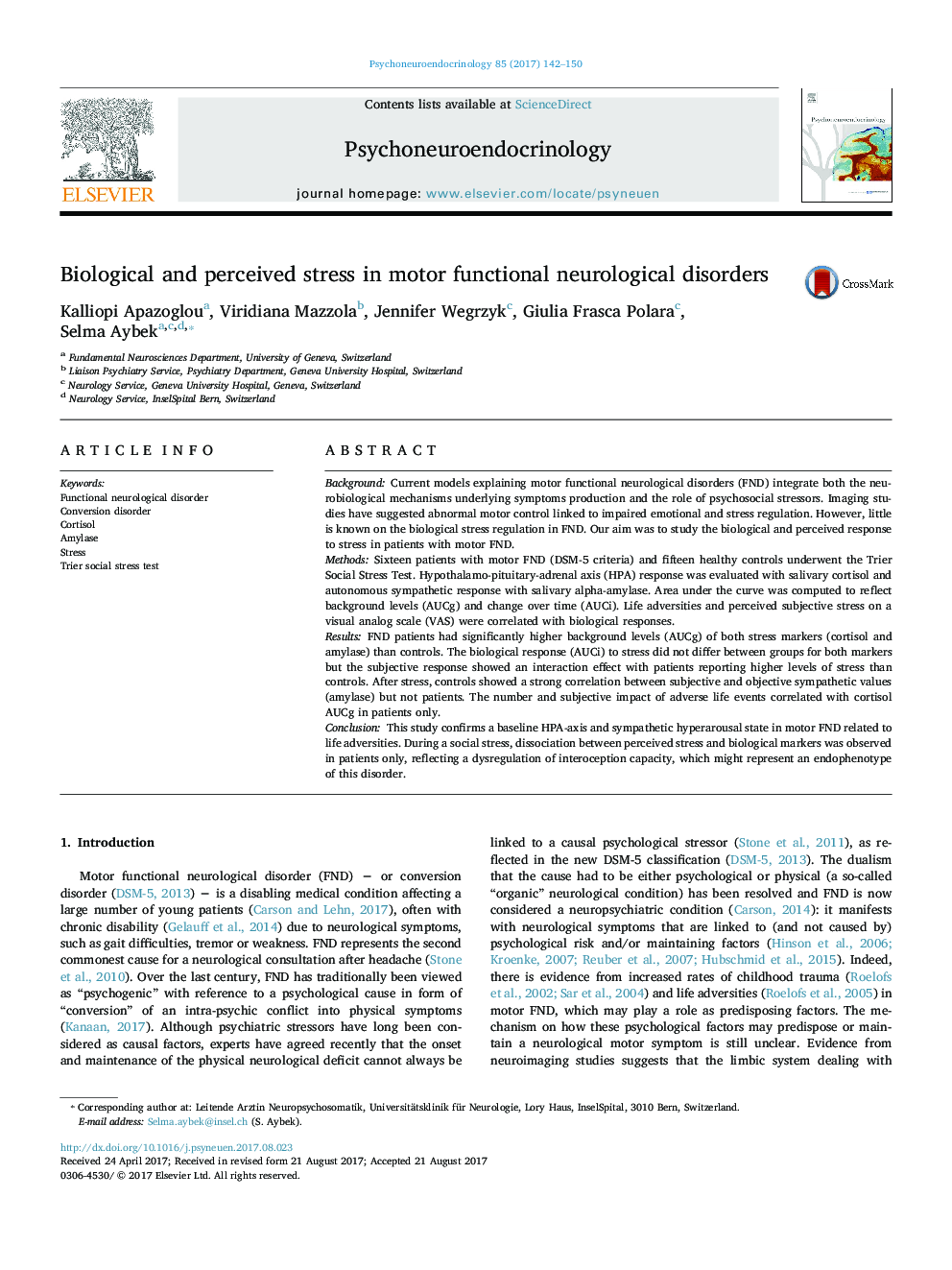| کد مقاله | کد نشریه | سال انتشار | مقاله انگلیسی | نسخه تمام متن |
|---|---|---|---|---|
| 4934177 | 1433958 | 2017 | 9 صفحه PDF | دانلود رایگان |
- This study provides evidence for abnormal stress regulation in motor functional neurological disorders (FND).
- Motor FND patients have higher levels of two stress biomarkers; cortisol (HPA-axis) & alpha-amylase (sympathetic system).
- Cortisol background levels correlate with adverse life events in FND patients.
- After stress, FND patients report higher stress feelings despite a normal stress response of cortisol and alpha-amylase.
- After stress, impaired interoception was observed in FND patients (mismatch of subjective & objective values of stress).
BackgroundCurrent models explaining motor functional neurological disorders (FND) integrate both the neurobiological mechanisms underlying symptoms production and the role of psychosocial stressors. Imaging studies have suggested abnormal motor control linked to impaired emotional and stress regulation. However, little is known on the biological stress regulation in FND. Our aim was to study the biological and perceived response to stress in patients with motor FND.MethodsSixteen patients with motor FND (DSM-5 criteria) and fifteen healthy controls underwent the Trier Social Stress Test. Hypothalamo-pituitary-adrenal axis (HPA) response was evaluated with salivary cortisol and autonomous sympathetic response with salivary alpha-amylase. Area under the curve was computed to reflect background levels (AUCg) and change over time (AUCi). Life adversities and perceived subjective stress on a visual analog scale (VAS) were correlated with biological responses.ResultsFND patients had significantly higher background levels (AUCg) of both stress markers (cortisol and amylase) than controls. The biological response (AUCi) to stress did not differ between groups for both markers but the subjective response showed an interaction effect with patients reporting higher levels of stress than controls. After stress, controls showed a strong correlation between subjective and objective sympathetic values (amylase) but not patients. The number and subjective impact of adverse life events correlated with cortisol AUCg in patients only.ConclusionThis study confirms a baseline HPA-axis and sympathetic hyperarousal state in motor FND related to life adversities. During a social stress, dissociation between perceived stress and biological markers was observed in patients only, reflecting a dysregulation of interoception capacity, which might represent an endophenotype of this disorder.
Journal: Psychoneuroendocrinology - Volume 85, November 2017, Pages 142-150
